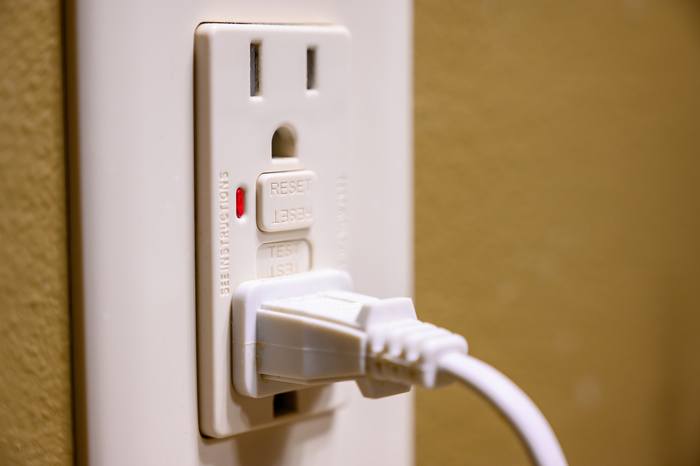Like any system in your home, your electrical system requires certain safety features that help keep everyone free from harm when using electricity. One of the most basic requirements for any home when it comes to the electrical system is the use of GFCI outlets in certain areas. The GFCI, or Ground Fault Circuit Interrupter found in this type of power outlet is an added safety feature which prevents home occupants from being injured or killed by electrocution. They are extremely effective, and other than their added safety features they work just like regular power outlets. So how exactly does a GFCI outlet work to keep you safe? Let’s check useful tip from these experienced Chilliwack electricians.
GFCI Basics
When you plug any type of device or appliance into a typical power receptacle you are causing electricity to circulate from your main power source to your device. For your power to run safely and effectively, it is important that the current of electricity circulates continuously from what is known as the “hot” connection to the “neutral” connection. If at any time this connection is disrupted, it can lead to a short circuit which can damage your device and cause physical harm to anyone who comes into contact. Once the power is disrupted on a regular outlet, it will usually cause a breaker or fuse to trip and cut off the power to that outlet until it can be safely reset. A GFCI outlet works differently because the interrupter is built into the outlet itself.
With the built in GFCI, the GFCI outlet can prevent power disruptions from becoming a danger to anyone. When the slightest interruption or disruption to the electrical current occurs, the GFCI outlet immediately cuts power to any device that is plugged in. This fast acting safety feature occurs in less than a second, which is important due to the instantaneous harm that can be caused by an electrical shock. The GFCI is designed to trip the circuit if the current varies by a factor of 4 or 5 milliamps. Since a human’s muscles can seize up and cease to move after being exposed to just 10 milliamps of power, and more than two seconds of contact with that kind of power can kill a person, the GFCI outlet’s safety specifications are certainly appropriate.
Where are GFCI Outlets Required?
If you look around your house in places like bedrooms, closets and your living room, you likely won’t find any GFCI outlets. If you continue to look in your bathroom, kitchen and even your garage, you should start to see some GFCI outlets with their characteristic set of “test” and “reset” buttons located between the receptacles. The GFCI outlets in most homes are typically found in exterior locations as well as around water sources such as the kitchen or bathroom sinks. Back in 1971, GFCI outlets became a requirement in houses, but only for exterior outlets and those located around pool equipment. Over time that standard for safety extended to inside the house. Today a GFCI outlet is required for any readily accessible receptacle in a kitchen, bathroom or outside in a garage or on the home’s exterior. It is these receptacles that are more prone to current disruption due to their proximity to water sources and other potentially damaging elements. There are additional locations that require GFCI outlets such as crawlspaces and basements, but a certified electrical expert can properly advise you on the specific requirements for your home according to the latest electrical codes.
If you are interested in improving the safety of your home, be sure to schedule an inspection with one of our certified Chilliwack electricians at BPM Electrical. We can give you all the information you require, and we are prepared to handle all of your installations and maintenance.
